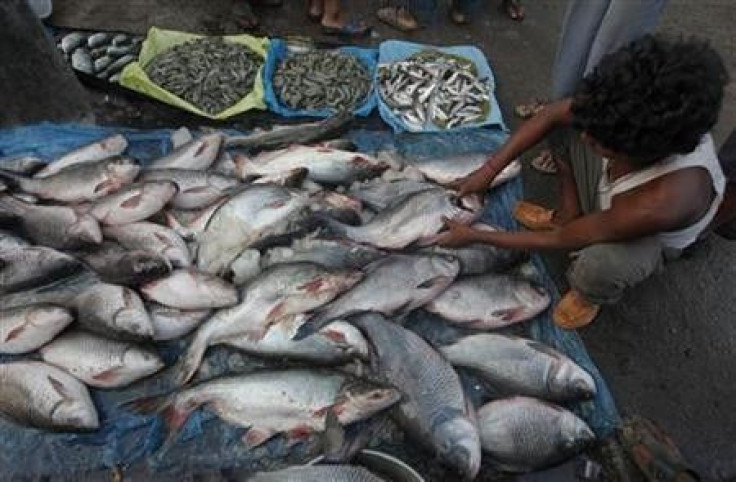Inflation Stubbornly High; RBI May Hold Rates Steady

India's wholesale prices rose more than expected in November, leaving inflation stubbornly high and suggesting the RBI would hold rates steady at its review on Friday even as worries grow over the health of the economy.
The wholesale price index, the main inflation gauge, rose 9.11 percent from a year earlier, slowing from a 9.73 percent rise in October but coming in above the 9.04 percent increase forecast in a Reuters poll.
The pull back from October was largely the result of a sharp drop in food inflation, although price pressures in fuel and manufacturing increased.
The data showed food inflation tumbled to 8.54 percent in November from more than 11 percent in October, while fuel inflation increased to 15.48 percent from 14.79 percent and manufacturing inflation increased marginally, to 7.7 percent from 7.66 percent.
Most of the improvement is because of food, said Rajeev Malik, an economist at CLSA in Singapore. The RBI is unlikely to jump the gun either on CRR (cash reserve ratio) or on the repo rate just yet. I think these are both early next year outcomes. But On Friday what it will do is it will sound a lot more dovish. That in itself is an important change.
Bond yields edged up after the higher-than-expected inflation figure. The 10-year yield rose 4 basis points to 8.46 percent, while stocks were down 0.4 percent.
The RBI has raised interest rates 13 times since March 2010 to try to force inflation down. But despite raising the repo rate during that period to a three-year high of 8.5 percent from 4.75 percent, inflation has stuck above 9 percent for about year.
However, the focus globally is shifting increasingly to measures to support growth as the euro-zone debt crisis weighs. Other central banks, including those in Brazil, China and Indonesia, have started to ease monetary policy.
Economic worries are increasing in India too. Some analysts say the economy will struggle to grow even 7 percent in the current fiscal year to March 2012, down from 8.5 percent in 2010/11.
Data showed on Monday that India's industrial output slumped more than 5 percent in October from a year earlier, far worse than expected and the first fall in more than two years. The rupee slid to a record low against the dollar.
High inflation and weakening economic growth, plus a record low rupee, leave the Indian central bank with difficult policy choices.
Inflation is high but growth concerns are ramping up pressure on the central bank to shift more quickly to an easing policy after it indicated in October that further rate rises may not be needed if inflation comes down.
But analysts suggest inflation may not fall enough to allow the central bank to cut rates until the April-June quarter of next year, barring a major slump in the economy.
In the absence of rate cuts that could fire up inflation again, some analysts say the central bank might lower the cash reserve ratio to ease tight market liquidity, or pledge more support for short-term funding markets, possibly as soon as Friday.
© Copyright Thomson Reuters 2024. All rights reserved.











